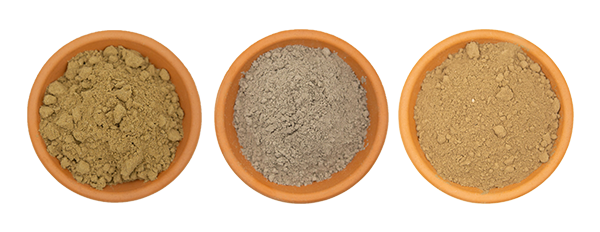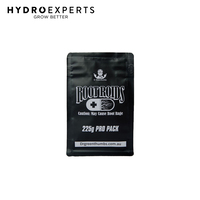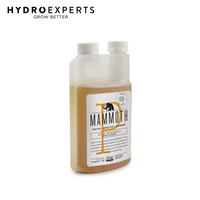Med-Tek Synergy Coir Beneficial Microbes - 275G
OUT OF STOCK
FREE SHIPPING OVER $499*
Pick up at store Free
Delivery Options:
If cart total is less than $499*
Freight applies
If cart total is $499* & above
Free
*excluding bulky items
International shipping
Click hereSECURE PAYMENTS WITH

BUY NOW, PAY LATER
Pay in 4, interest-free. Afterpay it.

ZIP NOW, PAY LATER
Repay on a convenient weekly, fortnightly or monthly schedule.

ENJOY NOW, PAY LATER





Synergy coir contains high cfu (guaranteed minimum analysis of 1.5 billion cfu per gram) of carefully selected, rhizosphere competent Trichoderma species (sp.). Trichoderma sp. has been shown in numerous studies to improve the resistance of plants against disease by acting as direct competition for ecological niches against pathogens, changing plant cell wall compounds, increasing enzyme activities, and/or production of pathogenesis-related proteins.
Trichoderma species are considered by many to be the superhero (super fungus) against evil parasites. They are highly adept assassins of pathogens.
Trichoderma sp. is shown in numerous studies to colonize extremely efficiently in coir. In fact, coir is shown in several studies to be the ideal substrate for the mass production/multiplication of Trichoderma species. In simple terms, Trichoderma sp. thrives in coir creating a prolific, dynamic, beneficial microflora that acts to prevent root disease.
Key Points:
- Synergy Coir, 275 grams, with a recommended retail price of $85.00, treats 2750 litres with a cfu count of 20 million (20 x 106) cfu per litre of the nutrient solution when applied at the recommended dosage rate of two scoops per 100 litres
- Synergy Coir contains 4 species of Trichoderma (harzianum, viride, koningii. reesei)
- These 4 species work in synergy to create a hostile environment for root zone pathogens
- Trichoderma species are considered by many experts in the field of agriculture and microbiology to be the “superhero (super fungus) against evil parasites”
- Trichoderma species are ideally suited to coir. Several studies have shown that coir is an ideal substrate for the mass production of Trichoderma
- High numbers (expressed through colony forming units/cfu) and efficient colonization of beneficial bacteria and/or fungi species are critical in root disease prevention/suppression. Numerous studies have demonstrated that Trichoderma rapidly multiplies and colonises organic substrates such as coir
- Trichoderma coil around pathogenic fungi, release enzymes to break down the cells and consume its prey
- Trichoderma release chitinase enzymes that break down chitin—the primary material that makes up the cell walls of pathogens
- In fact, when a large population of pathogenic fungi exists in the soil or substrate, Trichoderma increases chitinase production and feed almost exclusively on the pathogens.
- Trichoderma also releases another enzyme that is highly beneficial in root disease prevention: cellulase. Cellulase can penetrate root cells. When the cellulase penetrates the root cells, they automatically trigger the plant’s natural defence system. The plant’s metabolism is stimulated, but no harm is caused to the plant
- When a plants defence system is switched on a cascade of events occurs and protection against other fungal parasites (e.g. botrytis, powdery mildew) has been observed in the leaves, stem and flowers of the plant due to Trichoderma’s ability to stimulate the plant immune system
Features
- Promotes a dynamic, beneficial substrate/rhizosphere microflora
- Promotes root health through ecological competition, mycoparasitism, antibiosis and inducing local and systemic plant defence responses
- Increases root mass and health – larger, healthier roots = better yields
- Reverses root oxidation/damage
- Improves nutrient uptake
In The Box
- [1] x Med-Tek Synergy Coir Beneficial Microbes - 275G
Standard application throughout the crop cycle
Apply at the rate of two scoops to 100 litres. To ensure Synergy is fully dissolved and no clumping occurs, pre-dissolve in water (approx 1 scoop to 250ml water) prior to applying to the nutrient tank/Res or other holding tank.
Establishing a prolific microflora prior to planting
Application of Synergy should be done as soon as possible to establish a high population of Trichoderma in the substrate. For this reason, ideally Synergy is applied to the coir substrate 3-days prior to planting. For this purpose, we recommend that a double strength (4 scoops to 100 litres) application of Synergy is hand watered evenly into the substrate to ensure saturation occurs throughout the entire substrate. This practice helps to establish a viable microbial colony in the substrate prior to plants being placed into the growing system.
Apply to cuttings/clones to establish early colonization in the roots
Trichoderma sp. have been shown to increase root growth and health during striking/cloning. For this reason, application during cloning promotes root health and growth from the outset.
Usage rates during cloning:
Rockwool Cubes
Use at a rate of 1 scoop per 5 litres. Dip clone blocks in this solution.
Aero Cloning (e.g. Clone Station, Turboklone)
Use at a rate of 1 scoop to 10 litres.
Use Dechlorinated Water in the Growing System
Chlorinated water will disrupt (harm/kill) beneficial bacteria and/or fungi, regardless of the species or product. Even exposure to low levels of chlorine or chloramines for extended periods of time will disrupt the ability of Bennies to flourish. In short, when using beneficial microorganisms such as beneficial bacteria and fungi they must have chlorine and chloramine-free water to survive and flourish.
Fortunately, removing chlorine and chloramines from chlorinated water supplies is cheap and easy.
Activated Carbon Water Filters
The vast majority of mains water in Australia and North America is treated with monochloramine.
Activated carbon filtration is needed to remove chloramines/monochloramine.
Speak to a water filter supplier or your hydroponic supplier about activated carbon water filter options.
Safety
- Classified as Non-Hazardous
- Contains live organisms. Avoid aerosols generated by aeration
- Avoid skin contact
- KEEP OUT OF REACH OF CHILDREN
Med-Tek Coir Series
Feed chart based on 8-week bloom finishing time genetics. Some genetics take longer to finish and, as a result, feed recommendations should be adapted to suit. Switch down times from the18 hour lights on the vegetative phase to the 12-hour lights on the bloom phase will be determined by plant genetics and the desired finishing height of the plant/crop.
Vegetative Phase
.png)
Please note: we do not list in ppm, as some manufacturers do, because all ppm meters first measure in EC (electric conductivity) and then run a conversion program to display the reading in ppm. There are three different conversion factors (standards) that various manufacturers use for converting from EC to ppm. Thus, ppm is not a universal standard whereas EC is.
Bloom Phase
.png)
Cal-Mag Micro
Med Tek also manufactures and supplies Cal-Mag Micro, which doesn’t feature on the nutrient schedule. This is because, under normal coir growing conditions, our base nutrients supply adequate calcium and magnesium to fully satisfy the demands of the crop. However, Cal-Mag Micro was developed for growers who use RO or soft water (low to nil Ca and Mg in the water supply). Additionally, Cal-Mag Micro was produced to help plants that are under nutrient stress, and it is also handy for LED growers due to the fact that the calcium and magnesium requirement of the plant increases quite dramatically under some LED spectrums. Use Cal-Mag Micro at 1ml/L with RO or soft water supplies, 1- 2ml/L to help plants that are under nutrient stress (i.e. plants showing signs of calcium and/or magnesium deficiency) and use at 2ml/L during veg and transition if deficiencies appear in LED grows.
Feed charts should be seen as a guide only. Optimum EC is influenced by factors such as feed/fertigation frequency, light intensity and spectrum, temperature and humidity, and cultivar. Feed charts act to help less advanced growers (newbies) refine and develop a more sophisticated fertigation strategy relevant to their style of growing.







 Calculate shipping
Calculate shipping













